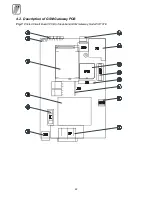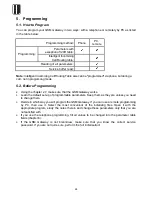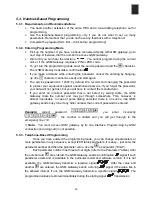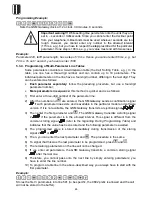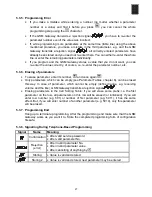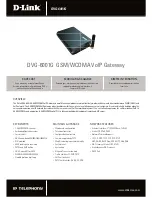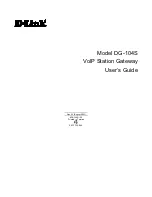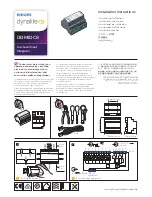
18
3.7. Notes
•
Telephone Line Power Down
Dialling
,
busy
, PIN
and PUK
tones are transmitted into a line for 60s. When this time elapses, the
line is put in the Power Down status (no power supply) until it is hung up. In the
programming mode, the line is put in the Power Down after 180s.
•
DISA
The DISA service relates to incoming calls only and those GSM Gateways that are
connected to the PBX’s external (CO) line. The GSM Gateway itself is not equipped with
the DISA function because it is useless – it is more convenient to use the PBX DISA. For
more details on the function refer to par. 3.2.1
–
“GSM Gateway Ringing, Extension
Dialling, Extension Ringing and Connection Establishing”.
If DISA is used, you are
recommended to forward incoming calls at night, during absence or busy line to the
operator, mailbox or answering machine, because any connection attempt is billed to the
calling subscriber. Further, remember that the GSM operator usually limits the ringing
time (for 30s, e.g.) and there is not much time for sequential ringing of several lines.
•
“Incognito”
This function (refer to the “
Programming
“ chapter) prevents the called subscriber from
seeing the number of your GSM Gateway. This function can be used, for example, if you
want to reduce incoming calls in such cases as:
•
Incoming calls from strangers represent no saving for you, but block your GSM
Gateway for your outgoing calls that can save your telephone costs considerably.
•
The subscriber you called (even unsuccessfully) from your GSM Gateway has your
GSM Gateway number in his mobile phone without knowing that it is a GSM Gateway
number. When calling back, he or she may get through to another person (operator,
e.g.) and has to try to get to the person who made the call, paying for all this.
•
“Outgoing Calls Only”
This function allows you to refuse all incoming calls. You can use it, for example, when
your GSM Gateway is busy making outgoing calls but you do not want to use the
Incognito function.
•
GSM Gateway Indicators
GSM Gateway indicators are not necessary for every-day operation. They are used for
control purposes and indicate most operational statuses and failures. Common statuses
are green, less common statuses yellow, and failures are red. Every indicator is provided
with a clear text. For details refer chapter 2.7 - LED Indicators.
Summary of Contents for ATEUS 501101E
Page 2: ......
Page 35: ...33 5 4 11 Remote Supervision Establishing Flow Chart ...
Page 56: ......
Page 57: ... 2002 2N TELEKOMUNIKACE a s Prague DR 972 v 1 33 ...



















